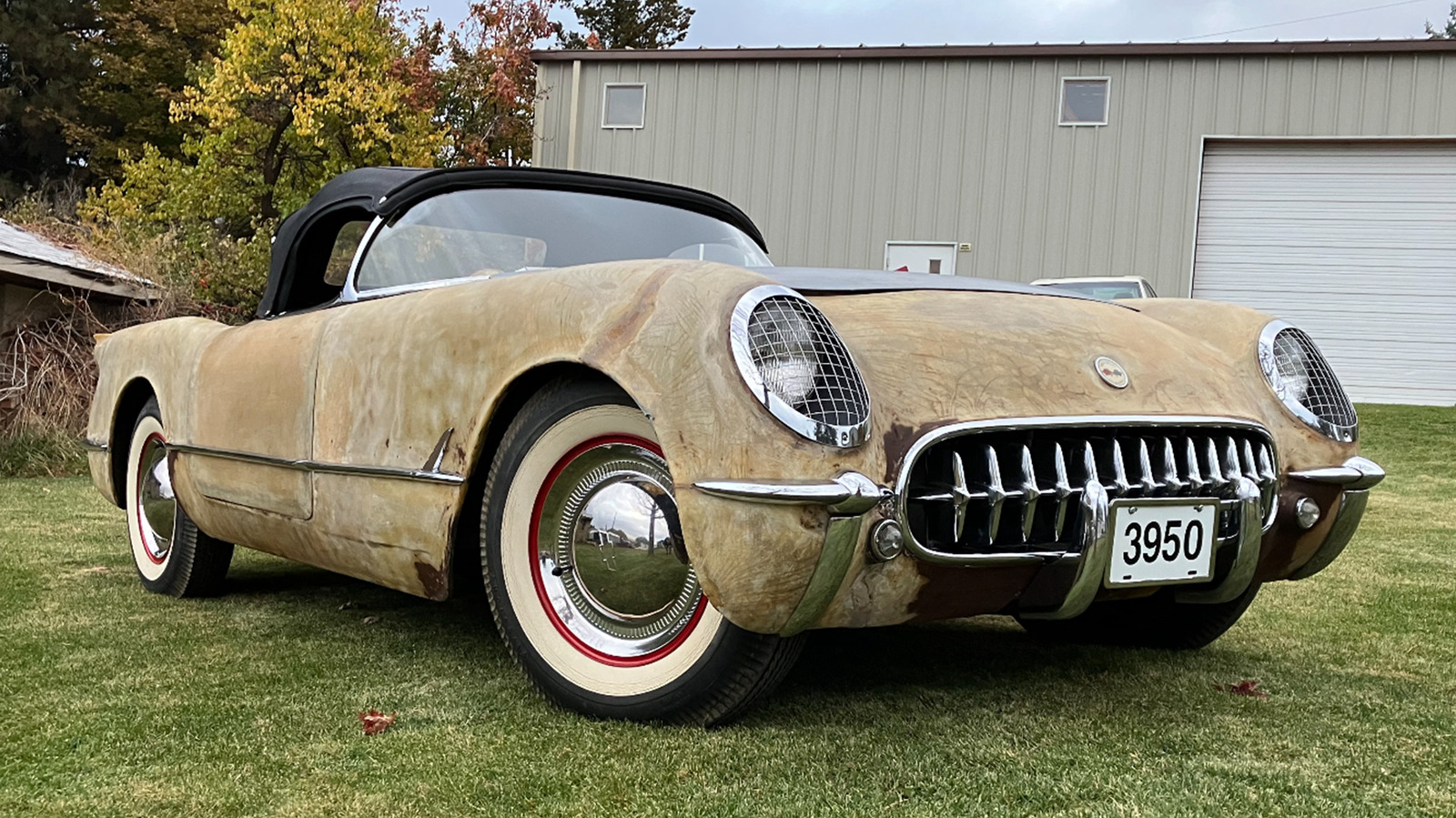Copyright SlashGear

The Chevrolet Corvette is arguably one of the most recognizable names in automotive history, representing America's first and one of the world's longest-lived sports cars with eight generations and counting, some of which are better than others. But Rome wasn't built in a day, and neither was the Corvette's reputation; in fact, the car faced numerous teething issues and skepticism upon its release, nearly folding due to its relative unpopularity. It was a highly experimental vehicle by American standards at the time, assembled in the rough visage of the European sports compacts that won the hearts of returning GIs after World War II. Was it perfect? Of course not, and GM knew this, too. Enter our infamous subject: the first-ever Corvette, a unique test bed with an incredible history. For starters, the fact that this is Corvette chassis number (abbreviated to CN) 001 is already special enough. But then we add in another important detail: namely, that this car was missing for decades before being discovered by almost pure happenstance in a restoration shop, still featuring its numerous alterations and other experimental oddities. Today the car is owned by Corey Petersen, one of the premiere names in Corvette historians, who plans to fully restore the car to its final configuration including all the various engineering changes GM implemented. This represents by far one of the most important and bizarre stories in Corvette history; it's not every day that you find a '53 to begin with, let alone the first-ever model long-believed to have been disassembled or used for parts or whatever other theories were out there. However, thanks to an interview conducted by Petersen himself, along with extensive documentation, we now have the full story regarding this incredible piece of American automotive history. The story of the 1953 Corvette, and therefore this car specifically, began on January 17, 1953, with the car's official unveiling on the opening day of GM's Autorama auto show in New York City. The novel sports car quickly garnered national attention as it toured with the traveling show, receiving more than 4 million visitors across multiple major cities. Despite this overwhelming publicity, however, the Corvette was effectively a niche car, incorporating a radical new fiberglass body design that was handmade. This drastically limited its production to just 300 units in its first year, with only 183 actually finding their way into customers' hands. There were various issues or idiosyncrasies associated with this initial production batch. All 1953 Corvettes were Polo White with red interiors, powered by the "Blue Flame" straight six mated to a two-speed automatic. Various issues cropped up fairly early on, generally focused around quality-of-life and customer expectations. Most of the changes that resulted began life in either this very car, alongside several other engineering prototypes taken off the assembly line for testing and/or retrofitting of various components. These early developmental cars helped shape the Corvette to what we know today, representing an ongoing developmental draft just as much as they were production vehicles. Bear in mind that Project Opel, the initial name for the Corvette, began in 1951, leaving just two years to design an entire new classification of car from scratch. There were bound to be various rough edges, many of which were sanded down using CN 001 as the test mule. As its name implies, this was the first-ever Corvette to roll off the production line, though the "001" moniker is slightly misleading. It was actually originally designated as "Engineering Number 3950" because it predated the VIN system for the Corvette, though it does sport a "001" number on the chassis as well. More correctly, however — and somewhat more confusing — it's actual name is 3950, being that it was a test bed not intended for sale. 3950 underwent a variety of modifications, each of which was either to trial out different ergonomic configurations, quality control issues, subtle improvements, and other minor tweaks. Petersen picked up on a variety of these discrepancies, with more major examples being a recessed floor with trapdoors, a 1954-pattern fuel filler guard, cleaned-up riveting in the trunk, and more, totaling 22 different items that needed fixing. The end result was a sports car that became one of the most popular classic Chevrolets ever. As described in his interview, Petersen states that the car wound up in the hands of an automotive restorer; however, the family sadly faced numerous health issues, placing the car on the back-burner. It ended up sitting in the shop as an unfinished project, a tale that's spelled the end of many classic cars. Petersen wasn't intending on actually finding 3950; in fact, he seemingly found the car through a combination of fervent research, persistence, and luck. Thankfully, 3950 is in good hands, with Petersen intending to restore it to its former glory.



